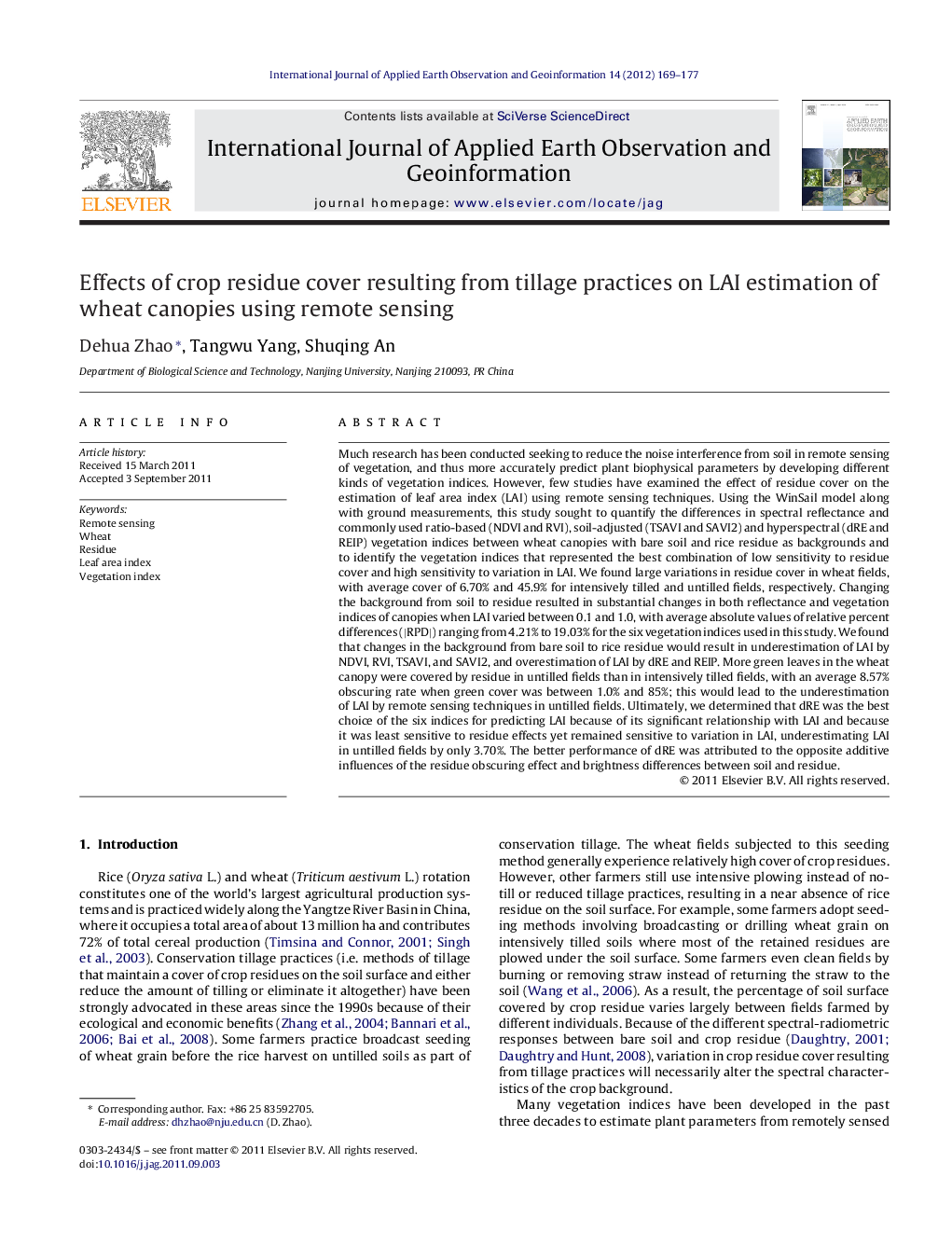| Article ID | Journal | Published Year | Pages | File Type |
|---|---|---|---|---|
| 4465045 | International Journal of Applied Earth Observation and Geoinformation | 2012 | 9 Pages |
Much research has been conducted seeking to reduce the noise interference from soil in remote sensing of vegetation, and thus more accurately predict plant biophysical parameters by developing different kinds of vegetation indices. However, few studies have examined the effect of residue cover on the estimation of leaf area index (LAI) using remote sensing techniques. Using the WinSail model along with ground measurements, this study sought to quantify the differences in spectral reflectance and commonly used ratio-based (NDVI and RVI), soil-adjusted (TSAVI and SAVI2) and hyperspectral (dRE and REIP) vegetation indices between wheat canopies with bare soil and rice residue as backgrounds and to identify the vegetation indices that represented the best combination of low sensitivity to residue cover and high sensitivity to variation in LAI. We found large variations in residue cover in wheat fields, with average cover of 6.70% and 45.9% for intensively tilled and untilled fields, respectively. Changing the background from soil to residue resulted in substantial changes in both reflectance and vegetation indices of canopies when LAI varied between 0.1 and 1.0, with average absolute values of relative percent differences (|RPD|) ranging from 4.21% to 19.03% for the six vegetation indices used in this study. We found that changes in the background from bare soil to rice residue would result in underestimation of LAI by NDVI, RVI, TSAVI, and SAVI2, and overestimation of LAI by dRE and REIP. More green leaves in the wheat canopy were covered by residue in untilled fields than in intensively tilled fields, with an average 8.57% obscuring rate when green cover was between 1.0% and 85%; this would lead to the underestimation of LAI by remote sensing techniques in untilled fields. Ultimately, we determined that dRE was the best choice of the six indices for predicting LAI because of its significant relationship with LAI and because it was least sensitive to residue effects yet remained sensitive to variation in LAI, underestimating LAI in untilled fields by only 3.70%. The better performance of dRE was attributed to the opposite additive influences of the residue obscuring effect and brightness differences between soil and residue.
► Residue resulted in underestimation of LAI by NDVI, RVI, TSAVI, and SAVI2. ► Residue resulted in overestimation of LAI by dRE and REIP. ► Obscuring effect in untilled fields was an average of 8.57%. ► dRE was the best choice in estimating LAI.
